
Computer Networks Protocols Lec.7 Dr. LAYTH ABDULKAREEM HASsnawi
1
Application Layer
The main jobs of application layer are:
Allows user to interface with the network.
Provides the interface between the applications on either ends of the network.
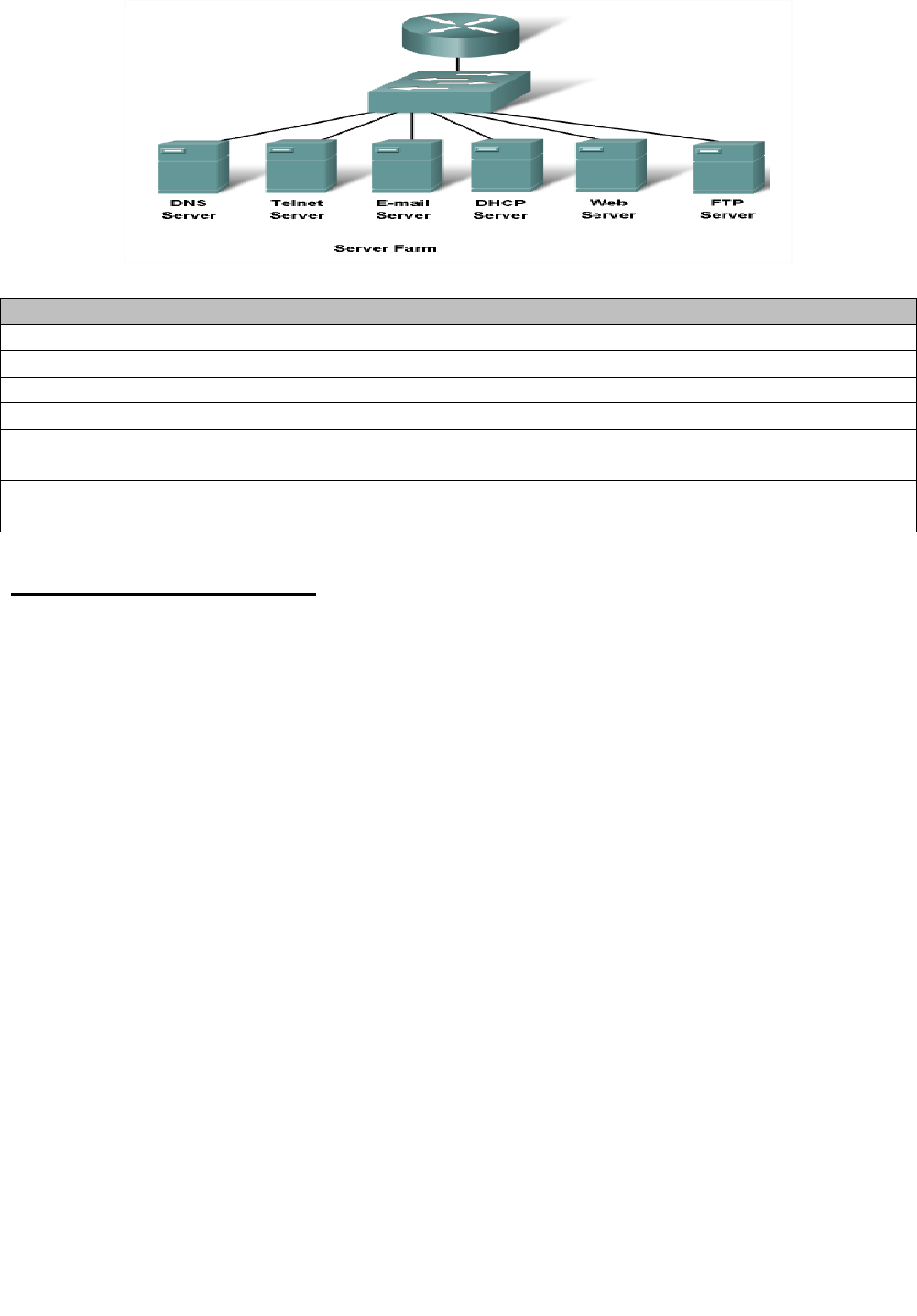
Computer Networks Protocols Lec.7 Dr. LAYTH ABDULKAREEM HASsnawi
2
Protocols
Description
DNS
Matches domain names with IP addresses
HTTP
Used to transfer data between clients/servers using a web browser
SMTP & POP3
used to send email messages from clients to servers over the internet
FTP
allows the download/upload of files between a client/server
Telnet
allows users to login to a host from a remote location and take control as if they
were sitting at the machine (virtual connection)
DHCP
assigns IP addresses, subnet masks, default gateways, DNS servers, etc. To users
as they login the network
Application Layer Software
There are two type of software used in application layer, these are:
1. Applications: Provide the human (user) interface. Relies on lower layers to complete the
communication process.
2. Services: Establish an interface to the network where protocols provide the rules and formats
that govern how data is treated.
How Data Requests Occur & are filled in application layer?
1. Client/server model
2. Peer-to-peer networking and applications
3. Application layer services and protocols
Client /Server Model
Client – device requesting information (initiates the data exchange) can also UPLOAD data
to the servers
Server – device responding to the request
Peer-to-Peer (P2P) Network Model
Two or more computers are connected and are able to share resources without having a
dedicated server.
Every end device can function as a client or server on a „per request‟ basis
Difficult to enforce security and policies
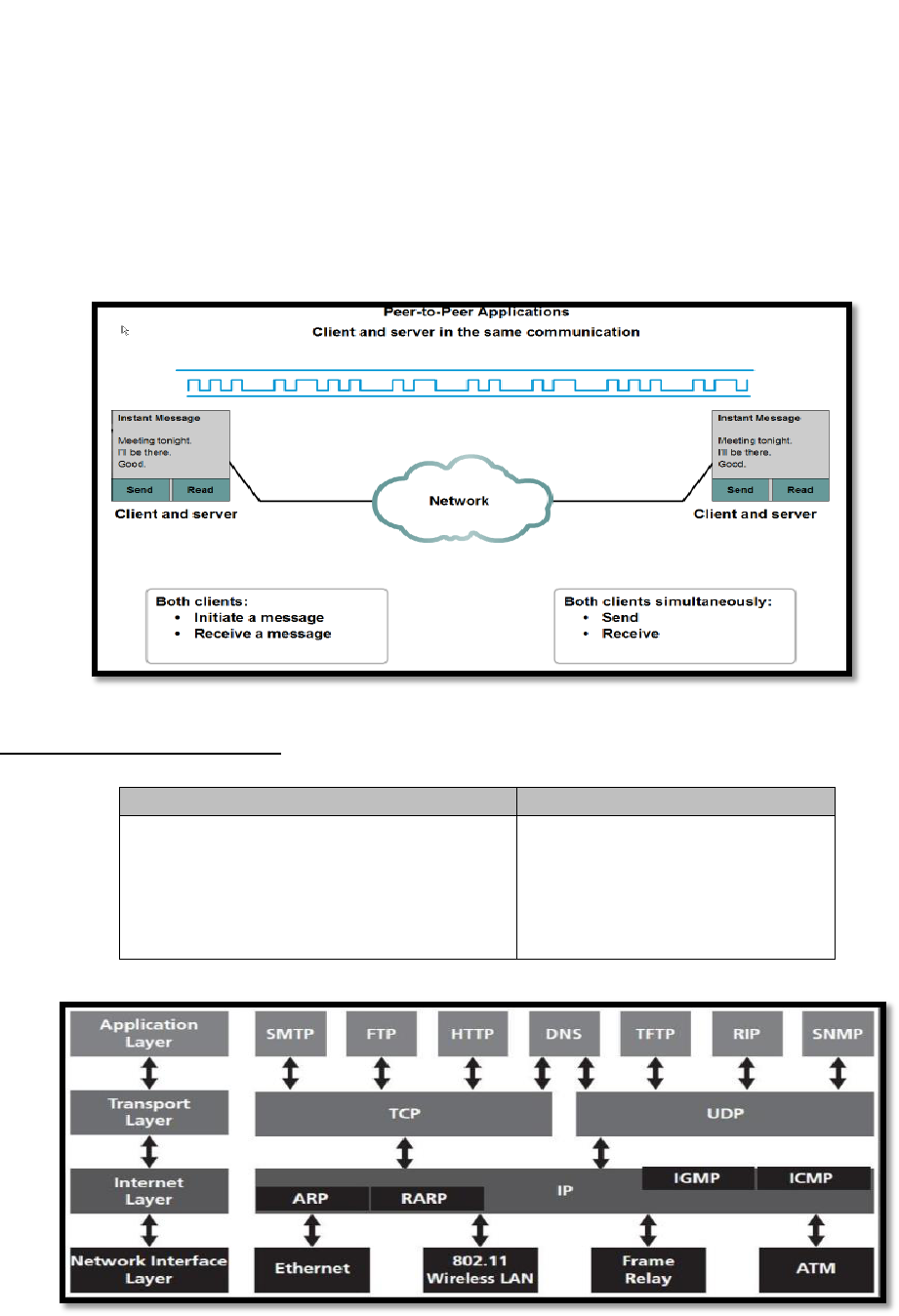
Computer Networks Protocols Lec.7 Dr. LAYTH ABDULKAREEM HASsnawi
3
User accounts and access rights have to be set individually on each peer device.
P2P Applications
Unlike P2P networks, a device can act as both the client and server within the same
communication
Each device must provide a user interface and run a background service.
Can be used on P2P networks, client/server networks and across the internet.
P2P Applications Example
Common Port Numbers
TCP
UDP
FTP – 20-21
Telnet – 23
SMTP – 25
DNS – 53 (Both TCP & UDP)
HTTP – 80
DHCP – 67 & 68
POP – 110
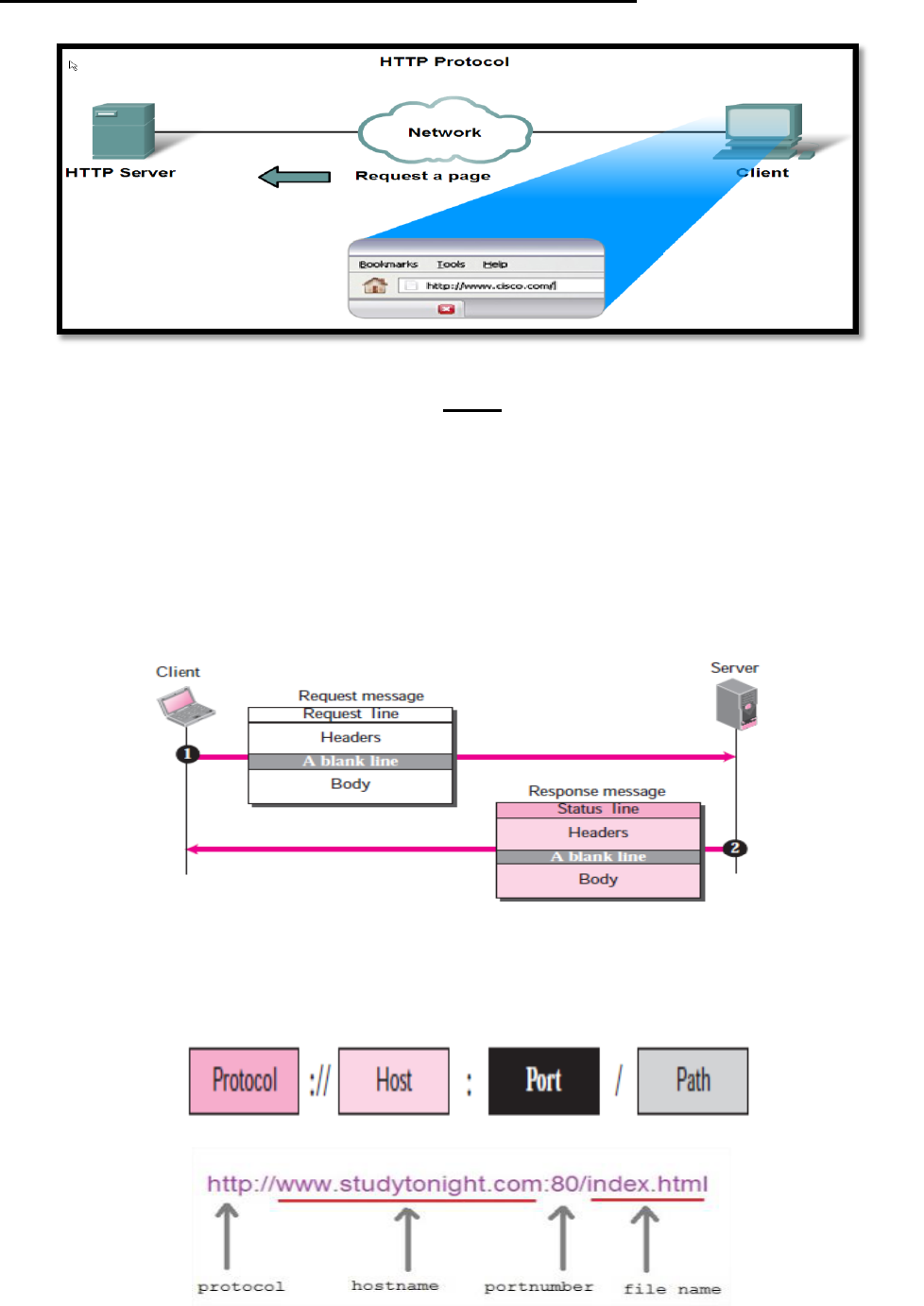
Computer Networks Protocols Lec.7 Dr. LAYTH ABDULKAREEM HASsnawi
4
WWW Service and HTTP(Hypertext Transfer Protocol)
The (HTTP) is a protocol used mainly to access data on the World Wide Web.
HTTP use TCP connection and port 80.
HTTP messages are not destined to be read by humans; (read and interpreted by the HTTP
server and HTTP client (browser).
HTTP is called a stateless protocol because each command is executed independently,
without any knowledge of the commands that came before it and the server does not keep
information about the client. The client initializes the transaction by sending a request. The
server replies by sending a response.
A client that wants to access a Web page needs the file name and the address.
The Uniform Resource Locator (URL) is a standard locator for specifying any kind of
information on the Internet, The URL defines four things:
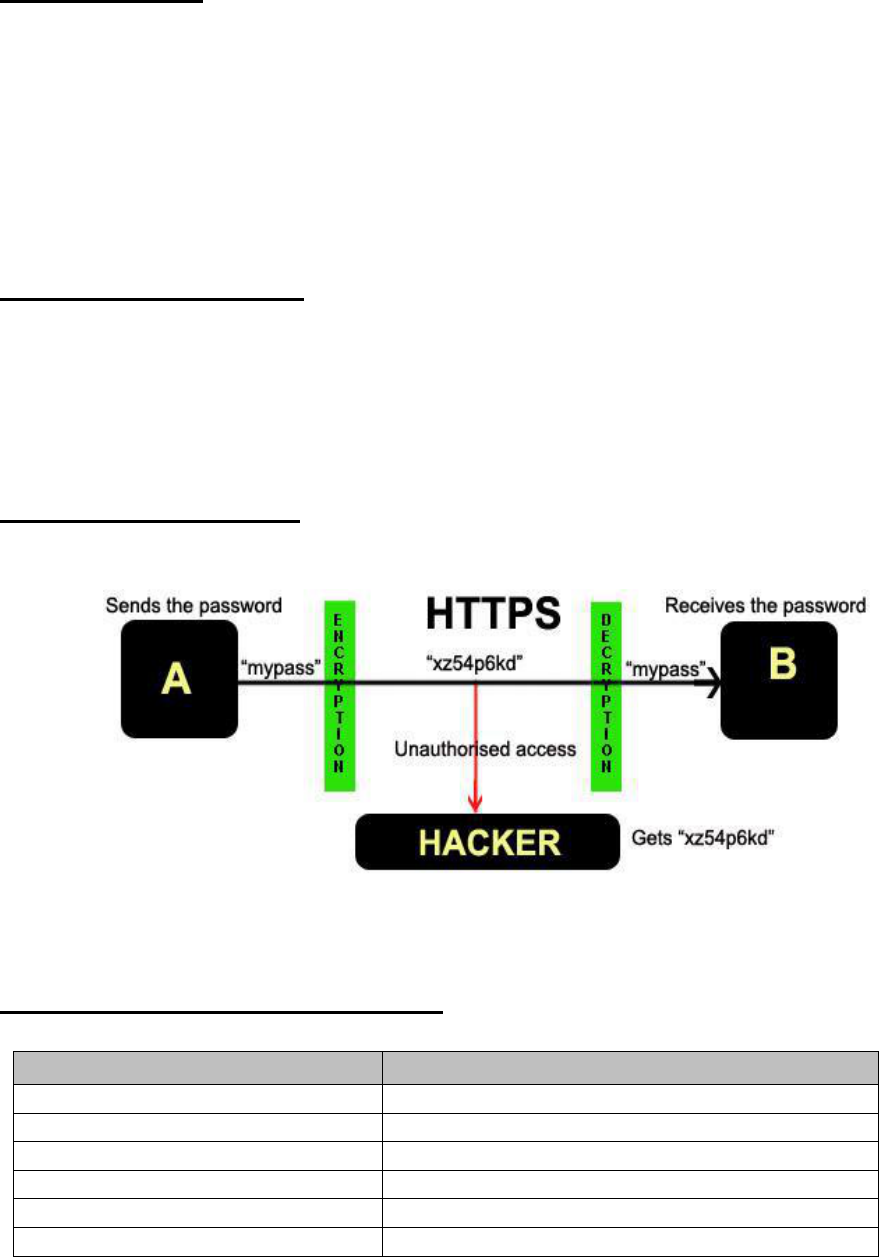
Computer Networks Protocols Lec.7 Dr. LAYTH ABDULKAREEM HASsnawi
5
Operation Steps:
1. URL is typed in the address bar.
2. Browser checks with DNS server to convert it to an IP address
3. Connects to the server requested
4. Using HTTP or HTTPS protocol requirements, the browser sends a GET request to the server
to ask for the desired html document (usually index.html)
5. The server sends the HTML code for the web page to the browser.
6. The browser interprets the HTML code and formats the page to fit the browser window.
HTTPS(HTTP + SSL)
HTTPS = HTTPS stands for Hypertext Transfer Protocol over Secure Socket Layer (SSL),
or HTTP over SSL.
HTTPS by default uses port 443.
URL's beginning with HTTPS indicate that the connection is encrypted using SSL.
Disadvantage of HTTPS:
HTTPS is slightly slower than HTTP because of the encryption of data.
orking of HTTPSW :ureFig
Compare between HTTP & HTTPS?
HTTP
HTTPS
1. URL begins with “http://"
1. URL begins with “https://”
2. unsecured
2. secured
3. uses port 80 for communication
3. Uses port 443 for communication.
4. operates at Application Layer
4. Operates at Transport and application Layer.
5. No encryption
5. uses encryption
6. No certificates required
6. certificates required
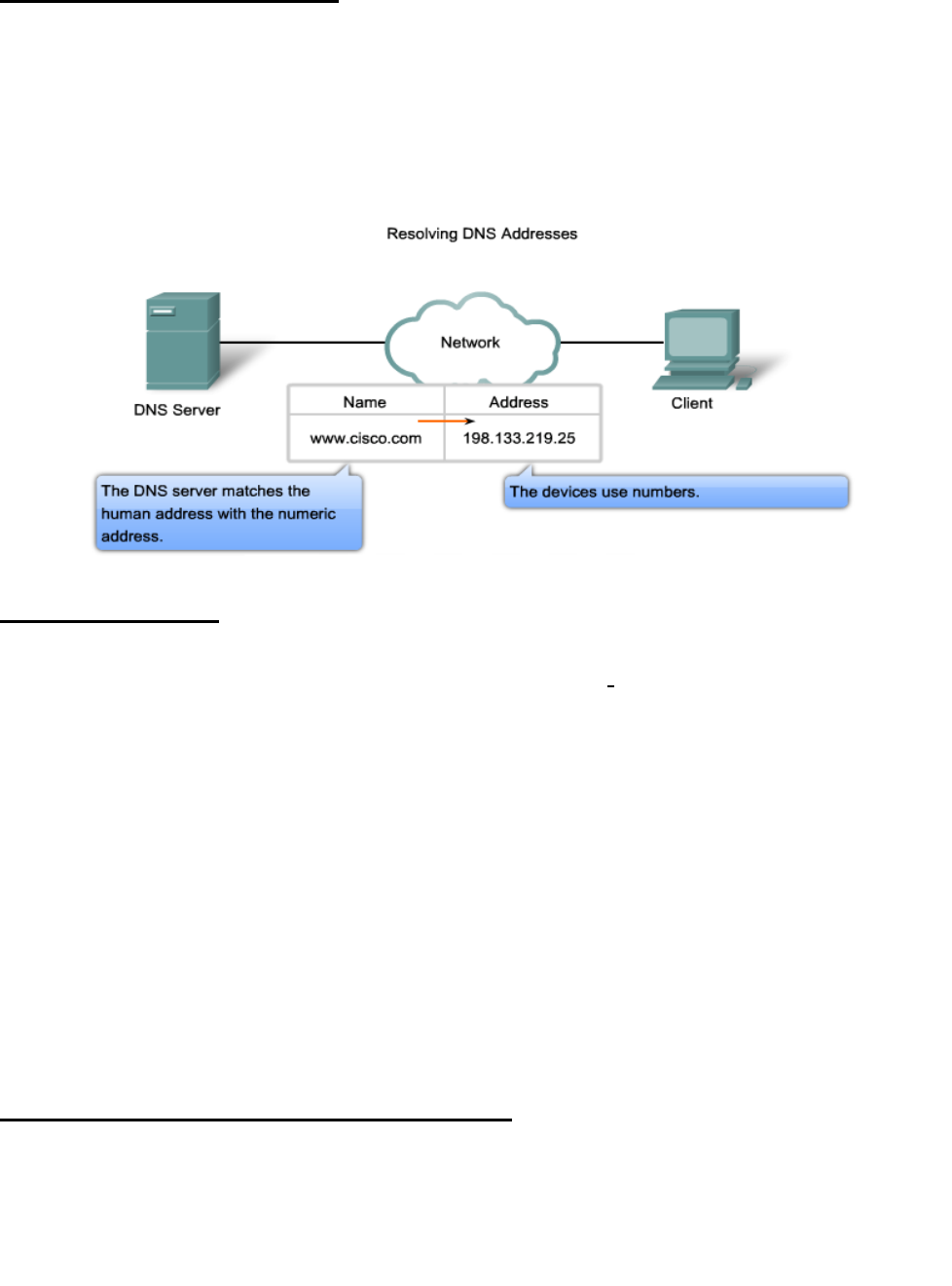
Computer Networks Protocols Lec.7 Dr. LAYTH ABDULKAREEM HASsnawi
6
Domain Name Service (DNS)
DNS is a client-server application that identifies each host on the Internet with a unique user-
friendly name.
The names must be unique because the addresses are unique.
DNS Servers resolve names to IP addresses. It would be difficult to remember the IP address
of every website we like to visit, but we can remember names.
HOW DNS Work?
One DNS server can‟t response to all of the demands that coming from all over the world.
The problem is how we can distribute the traffic among more DNS servers, this problem
solved by Domain Name Space.
Types of Domain Name Space
1. Flat name space: a name is assigned to an address. A name in this space is a sequence of
characters without structure. Don’t use in Internet because there is no centrally
controlled.
2. Hierarchical name space: each name is made of several parts. The first part can define
the nature of the organization, the second part can define the name of an organization, and
the third part can define departments in the organization. Used at internet.
Hierarchical Domain name space(structure)
DNS organizes the name space in a hierarchical structure to decentralize the
responsibilities involved in naming. Distributed the traffic between more than one DNS
server.
hierarchical tree structure with one root
The tree can have only 128 levels: level 0 (root) to level 127.
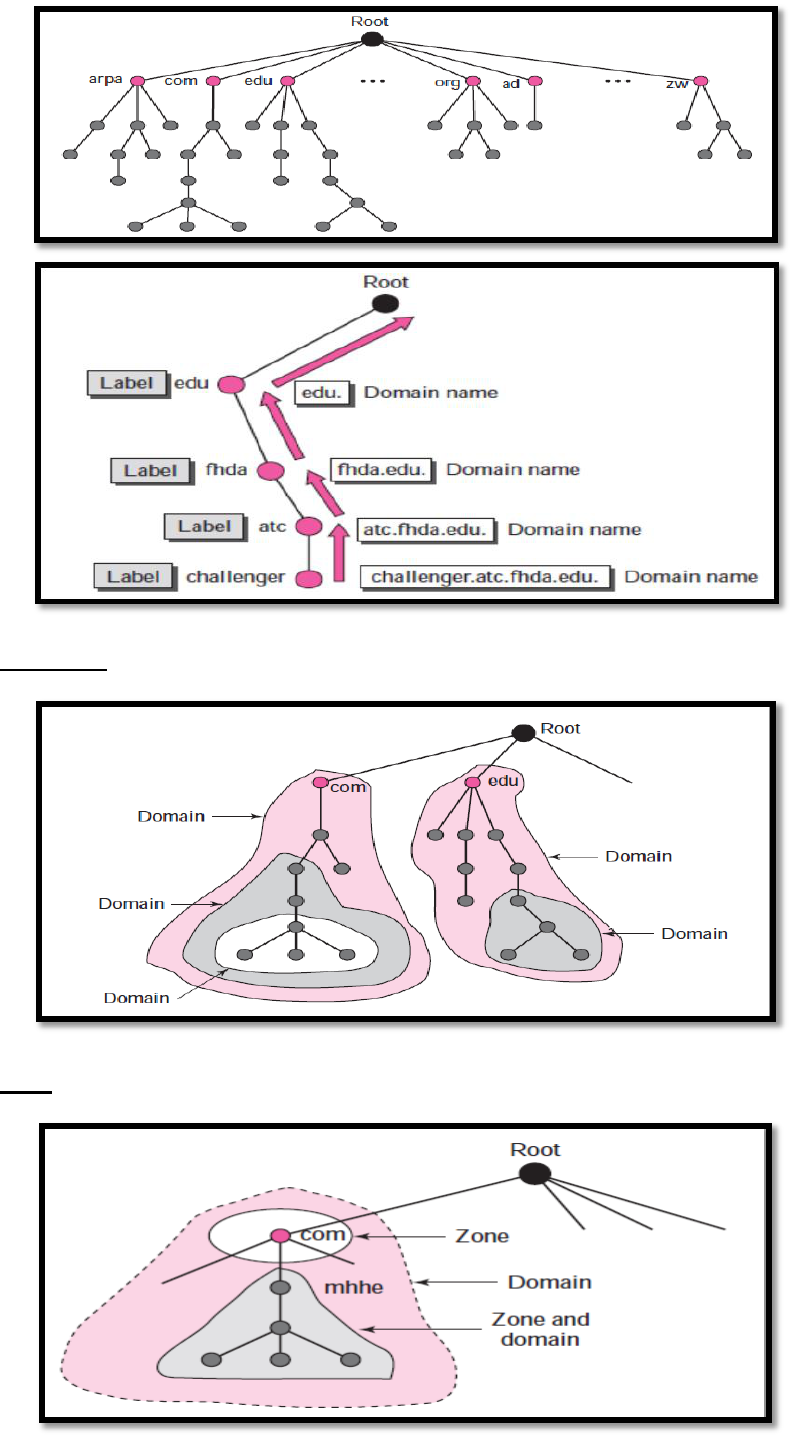
Computer Networks Protocols Lec.7 Dr. LAYTH ABDULKAREEM HASsnawi
7
A domain is a sub tree of the domain name space.
Zone in name space
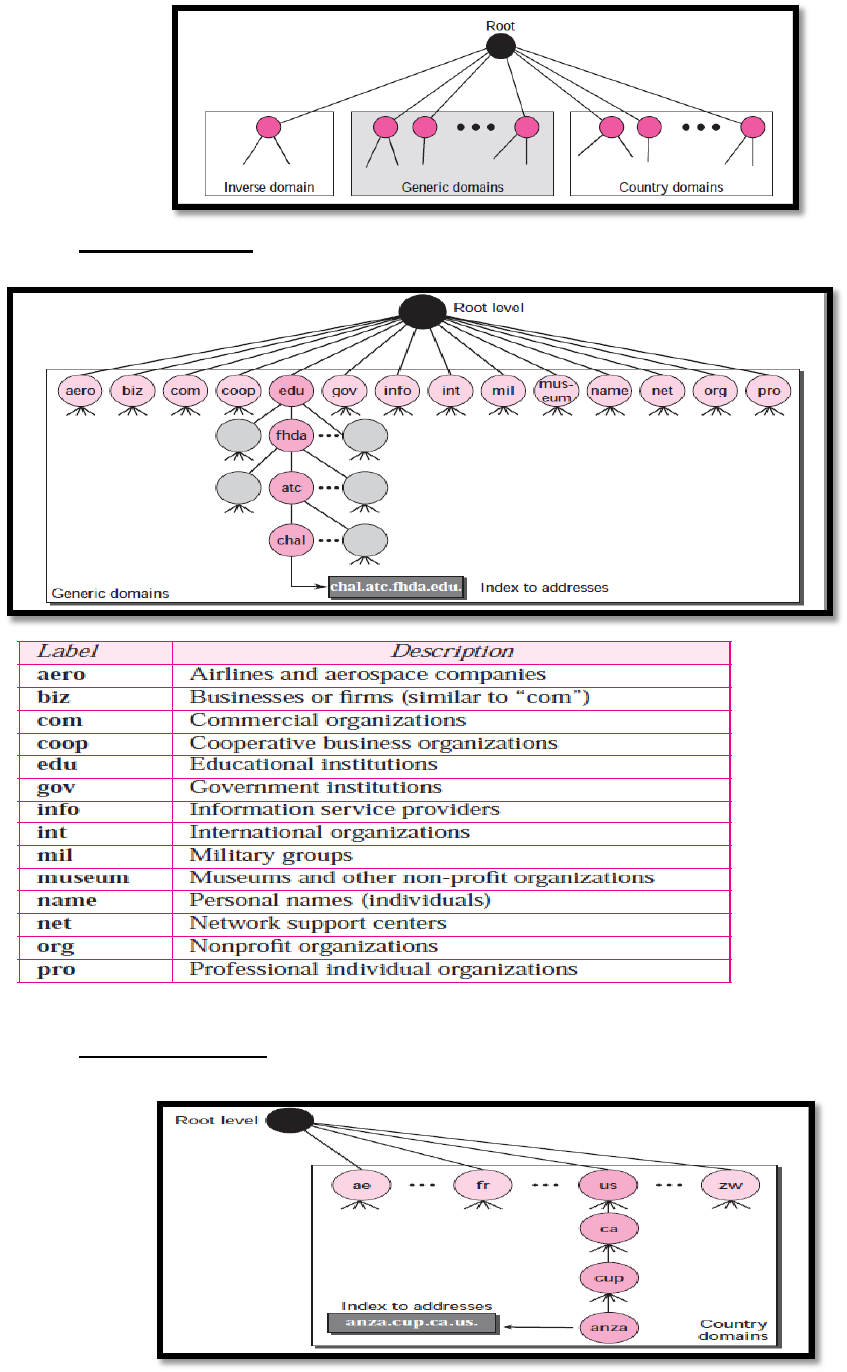
Computer Networks Protocols Lec.7 Dr. LAYTH ABDULKAREEM HASsnawi
8
DNS In The Internet
Generic domains: There are fourteen generic domains, each specifying an organization
type.
Country domains (uses two character country abbreviations, Second labels can be
organizational and so on)
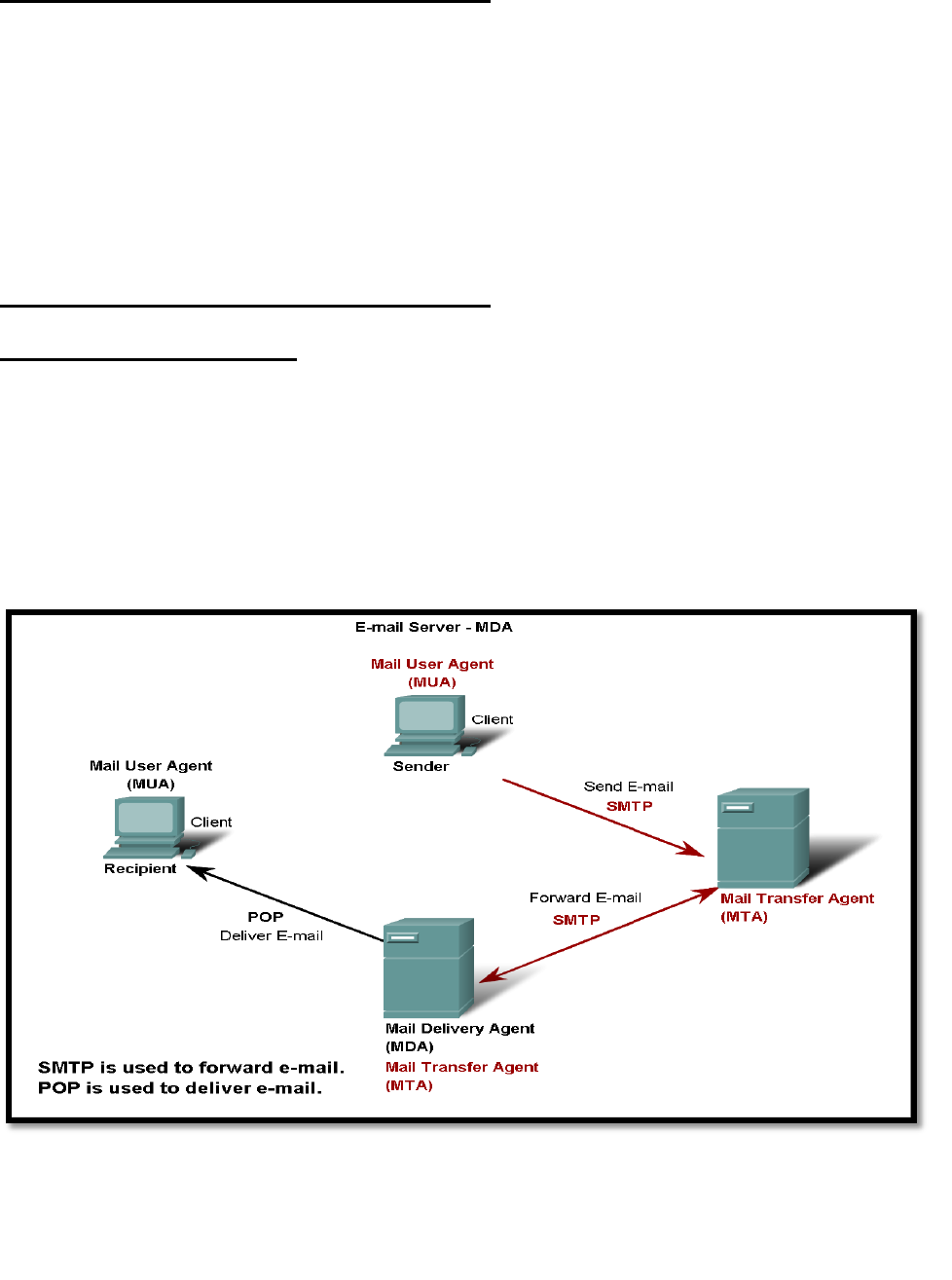
Computer Networks Protocols Lec.7 Dr. LAYTH ABDULKAREEM HASsnawi
9
E-mail Services and SMTP/POP protocols
E-mail is the most popular network service.
E-mail client (when people compose e-mail) is called Mail User Agent (MUA)
MUA allows messages to be sent/retrieved to and from your mailbox
Requires several applications and services:
POP or POP3 – deliver email from server to client (incoming messages) post office prot.
SMTP – handles outbound messages from clients
E-mail Services and SMTP/POP protocols
What do servers require?
1) Must be running SMTP.
2) Also operates
o Mail Transfer Agent (MTA) – used to forward email
o Receives email from the clients MUA
o Uses SMTP to route email between SERVERS
o Passes email to the MDA for final delivery
3) For two e-mail servers to talk – MUST run SMTP and MTA in order to transfer mail between the
2 servers!
Commands and Responses
SMTP uses commands and responses to transfer messages between an MTA client and an
MTA server.
The mail server is called an SMPT client when sending message and SMPT server when
receiving message.
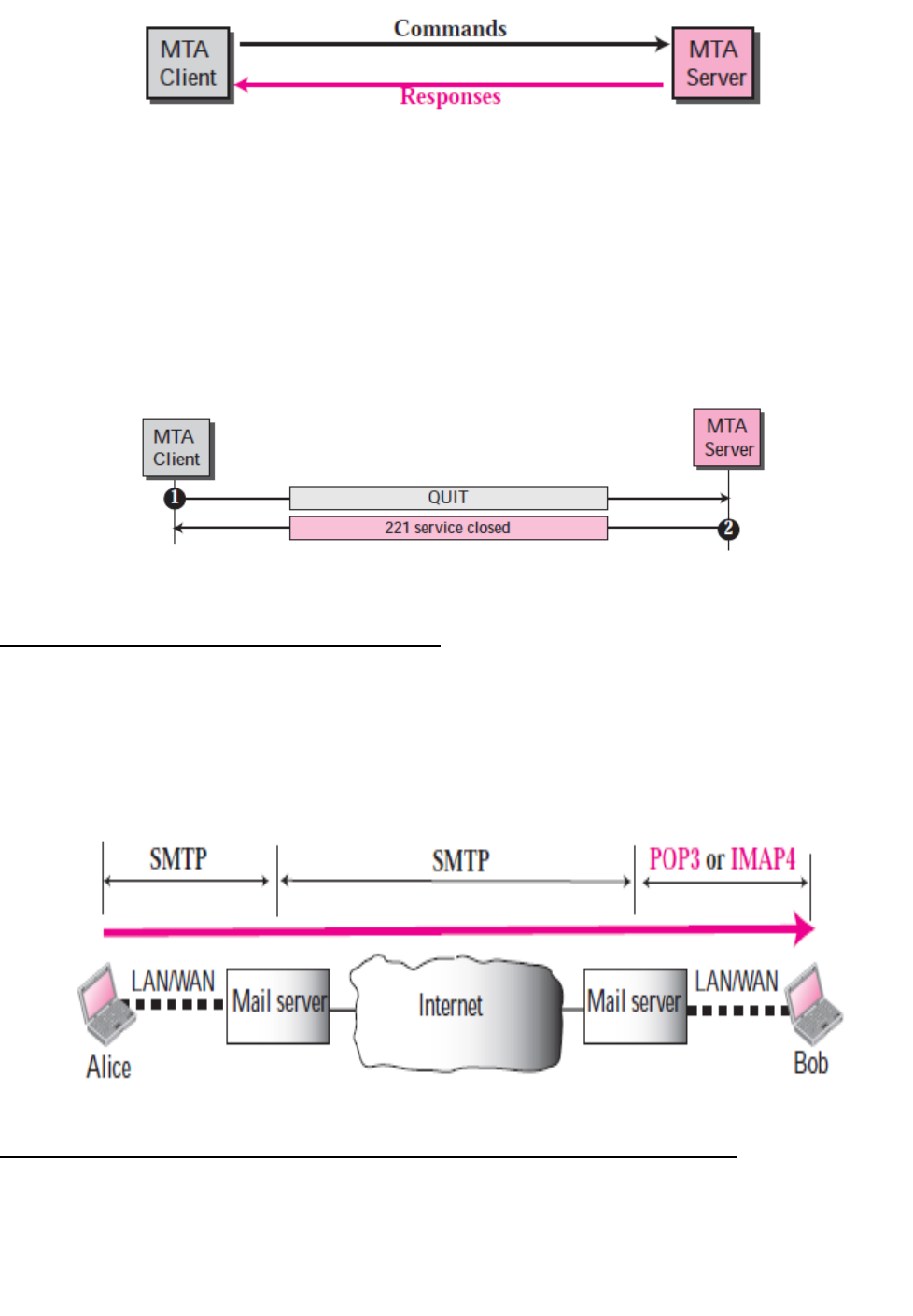
Computer Networks Protocols Lec.7 Dr. LAYTH ABDULKAREEM HASsnawi
10
Commands are sent from the client to the server.
1. HELO.
2. MAIL FROM.
3. RCPT TO.
4. DATA.
5. QUIT.
Connection Termination
Message Access Agent: POP and IMAP
As shown in the figure bellow, the first and the second stages of mail delivery use SMTP. However,
SMTP is not involved in the third stage because SMTP is a push protocol; it pushes the message
from the client to the server.
E-mail Server Processes - MTA and MDA and the SMTP protocol
The e-mail server operates two separate processes:
1. Mail Transfer Agent (MTA)
2. Mail Delivery Agent (MDA)
The Mail Transfer Agent (MTA) process is used to forward e-mail.
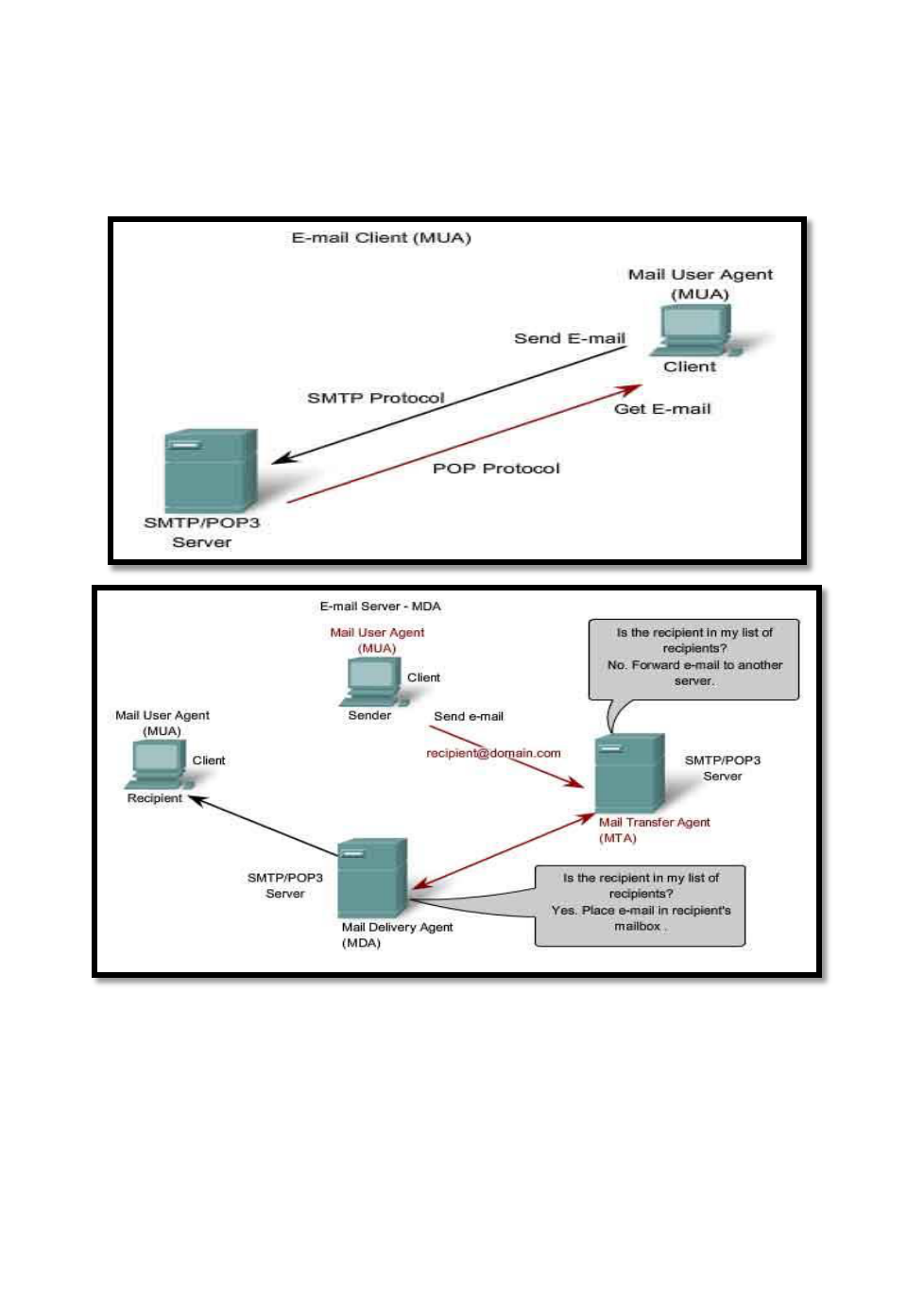
Computer Networks Protocols Lec.7 Dr. LAYTH ABDULKAREEM HASsnawi
11
The MTA receives messages from the MUA (client) or from another MTA on another e-mail
server.
Based on the message header, it determines how a message has to be forwarded to reach its
destination.
If the mail is addressed to a user whose mailbox is on the local server, the mail is passed to
the MDA (POP or IMAP). If the mail is for a user not on the local server, the MTA routes
the e-mail to the MTA on the appropriate server.
File Transfer Protocol (FTP)
Commonly used application layer protocol
Used for the transfer of files between clients/servers model architecture.
Requires two connections to the server
1. Control connection: control connection is used for opening / closing an FTP session
and for transferring commands from client to server uses TCP port 21(This connection
is kept alive as long as the client keeps FTP session active).

Computer Networks Protocols Lec.7 Dr. LAYTH ABDULKAREEM HASsnawi
12
2. Data Connection: The data connection is used for transferring individual files
between client and server uses TCP port 20 (This connection is kept alive for the
duration of one file transfer).
Telnet
TELNET is a protocol allowing you to connect to remote computers. TELNET uses a client/server
model. It has the following features:
Allows users to emulate text-based terminal devices over the network using software.
A connection is known as a Network Virtual Terminal session.
Can be run from the command prompt on a PC.
You can use the device as if you were sitting there with all the rights and priorities that you
username will offer you.
Disadvantages: Doesn’t support encryption like SSH. All data is transferred as plain
text. It can be easily intercepted and understood.
If security is a concern, you should use Secure Shell (SSH) protocol. Provides for remote
logins with stronger authentication than telnet.

Computer Networks Protocols Lec.7 Dr. LAYTH ABDULKAREEM HASsnawi
13
File Sharing Services and SMB Protocol
The Server Message Block (SMB) is a client/server file sharing protocol.
SMB has become a mainstay of Microsoft networking, even more so since the introduction of
Windows 2000 software.
Allows servers to share their resources with clients.
Linux and UNIX also share with Microsoft networks using a version of SMB called SAMBA.
Apple also supports sharing resources using an SMB protocol
What can SMB do?
1. Start, authenticate, and terminate sessions.
2. Control file and printer access.
3. Allow applications to send/receive messages to/from another device.
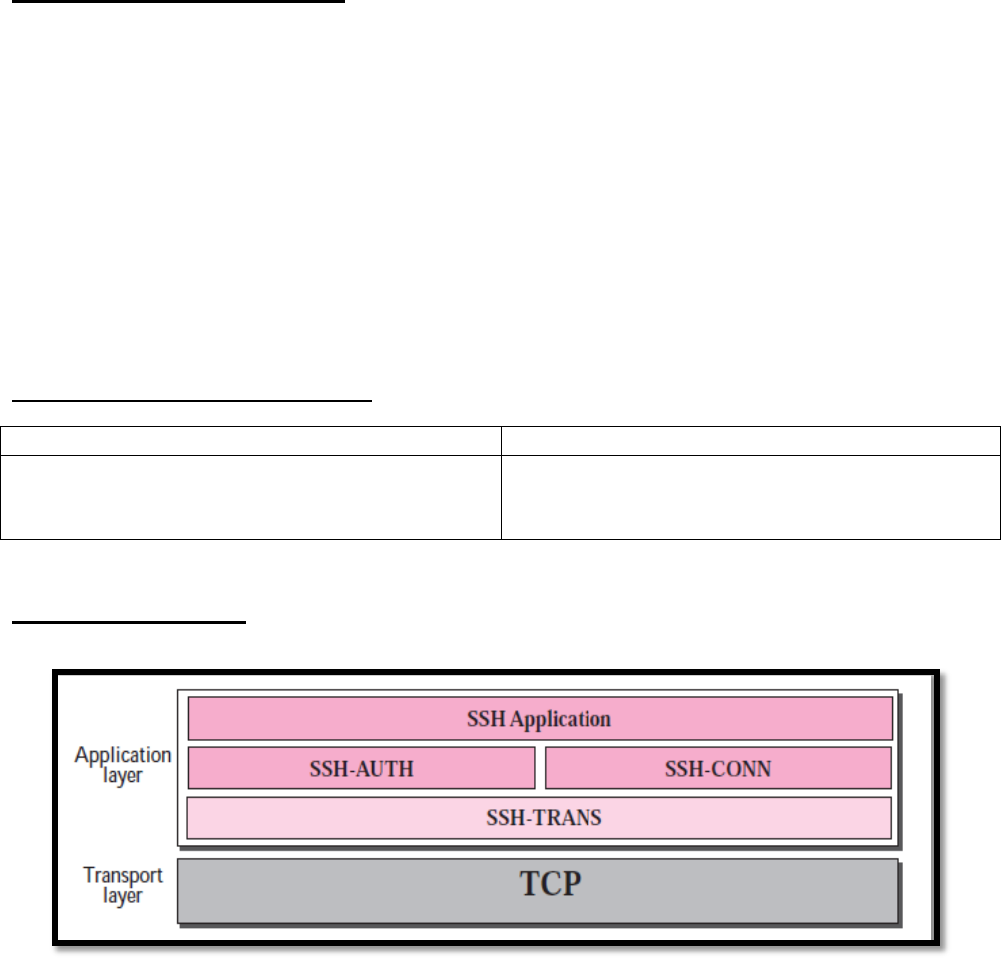
Computer Networks Protocols Lec.7 Dr. LAYTH ABDULKAREEM HASsnawi
14
Secure Shell Protocol (SSH)
The Secure Shell (SSH) protocol is a method for secure remote login from one computer to
another.
It protects the communications with strong encryption.
SSH, like TELNET, uses TCP as the underlying transport protocol, but SSH is more secure and
provides more services than TELNET. These services are:
1. Covers authentication, encryption.
2. Solve the security issues at remote login of Telnet.
3. Solve the security issues during file transfer at FTP
There are two versions of SSH: SSH-1 and SSH-2, which are totally incompatible.
The first version, SSH-1 is now deprecated because of security problems in it.
SSH is a proposed application-layer protocol with four components.
Q/ Compare between SSL and SSH?
SSL
SSH
is TCP-based and always used in WEB
applications, with HTTP.
is TCP-based and always used with Telnet and
FTP
SSH-2 Components
SSH is organized as three protocols (components) that typically run on top of TCP, these are:
SSH Transport-Layer Protocol (SSH-TRANS)
This protocol is responsible about:
Privacy or confidentiality of the message exchanged.
Data integrity.
Server authentication.
Compression of the messages that improve the efficiency of the system and make attack more
difficult.
SSH Authentication Protocol (SSH-AUTH)
After a secure channel is established between the client and the server, the server is
authenticated for the client, SSH can call software that can authenticate the client for the
server.
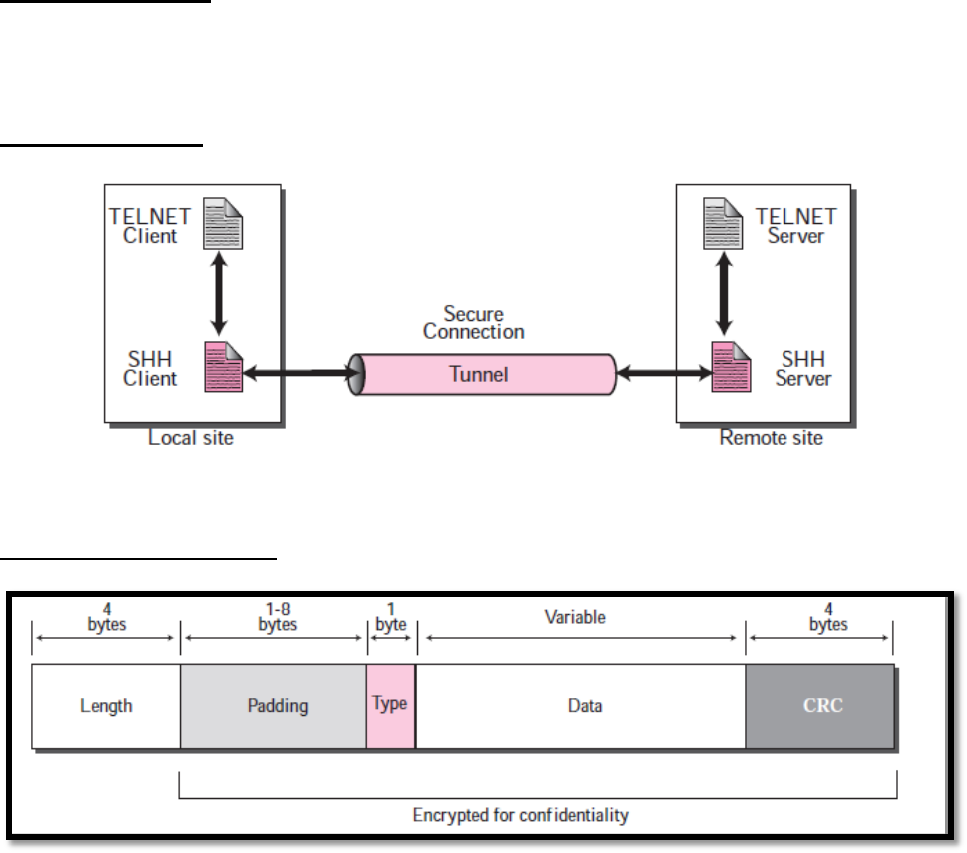
Computer Networks Protocols Lec.7 Dr. LAYTH ABDULKAREEM HASsnawi
15
The Connection Protocol [SSH-CONNECT]: multiplexes the encrypted tunnel into
several logical channels. It runs over the user authentication protocol.
SSH Applications
Remote login
file transfer
Port Forwarding
Format of the SSH Packets
Length: This 4-byte field defines the length of the packet including the type, the data, and the
CRC field, but not the padding and the length field.
Padding: One to eight bytes of padding is added to the packet to make the attack on the
security provision more difficult.
Type: This one-byte field defines the type of the packet used by SSH protocols.
CRC: The cyclic redundancy check filed is used for error detection.
